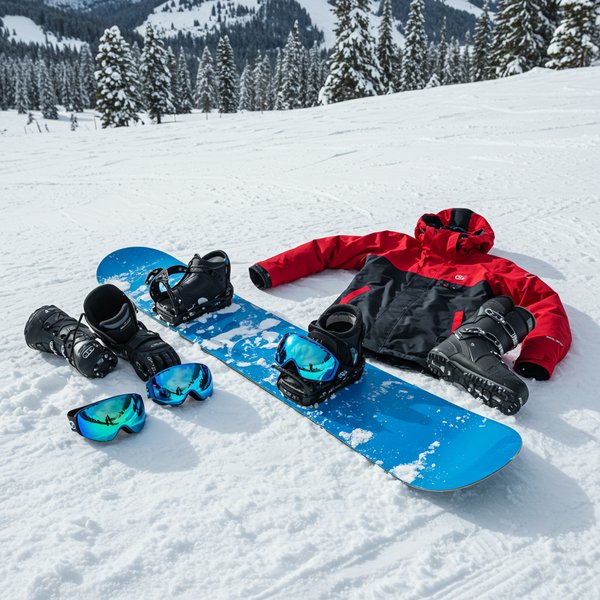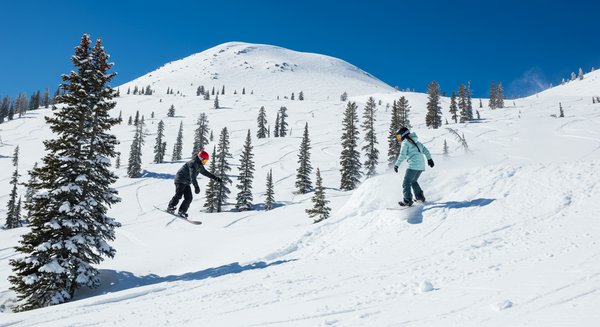Lesson
Welcome to Snowboarding Basics!
This lesson will introduce you to the fundamental elements of snowboarding, setting you on the path to enjoying this exhilarating sport. We'll cover the essential equipment, the correct stance, and how to maintain your balance, all while focusing on getting you comfortable sliding on your board. Remember, practice makes perfect, so be patient and have fun!
Snowboarding Equipment
Understanding your equipment is the first step to a successful snowboarding experience. Let's break down the key components:
- Snowboard: The most important piece of equipment. Snowboards come in various lengths and shapes, so choosing the right one is crucial. For beginners, a softer, shorter board is generally recommended as it's easier to control.
- Bindings: These attach your boots to the snowboard. They should be securely fastened but not too tight, allowing for some flexibility. There are different types of bindings, but most beginners start with strap-in bindings.
- Boots: Snowboard boots should fit snugly and comfortably. They provide support and help transfer your movements to the board. Make sure they are properly laced or buckled for a secure fit.
- Helmet: Safety first! A helmet is essential for protecting your head from potential injuries.
- Goggles: Goggles protect your eyes from the sun, wind, and snow, ensuring clear visibility on the slopes.
- Snowboard Apparel: Wear waterproof and breathable clothing to stay warm and dry. Layers are key to regulating your body temperature. Gloves or mittens are also essential for keeping your hands warm.

Understanding Stance
Your stance is the way you position yourself on the board. There are two primary stances:
- Regular: Riding with your left foot forward.
- Goofy: Riding with your right foot forward.
Not sure which stance is right for you? A simple test is to have someone gently push you forward. The foot you naturally put out to catch yourself is likely your front foot. You can also try sliding on a smooth surface in your socks. Whichever foot feels more natural in front is likely your snowboard stance.

Setting Up Your Bindings
Once you know your stance, you need to set up your bindings accordingly. Your front binding should be angled slightly forward, allowing you to initiate turns easily. The angle of your back binding is often set to be neutral or slightly angled back. A common beginner setup is +15 degrees on the front and 0 degrees on the back binding. As you progress, you can experiment with different angles to find what feels most comfortable.
Finding Your Balance
Balance is crucial for snowboarding. Here's how to start developing it:
- On Flat Ground: Start by strapping into your board on a flat surface. Get a feel for the board and practice shifting your weight from toe to heel.
- One-Footed Gliding: With one foot strapped in, use your free foot to push yourself along. Practice steering by leaning slightly in the direction you want to go. This helps you get comfortable with the feeling of gliding on the snow.
- Finding Your Center of Gravity: Imagine a line running vertically through your body. Keep this line centered over the board. Avoid leaning too far forward or backward.
Basic Sliding Techniques
Now it's time to start sliding! Find a gentle, flat slope. Here's how to control your movement:
- Heel Edge Control: Start by positioning yourself across the slope, facing uphill. This is your heel edge. Apply pressure to your heels to prevent yourself from sliding. Release pressure to allow yourself to slide down the hill slowly. This teaches you to control your speed using your heel edge.
- Toe Edge Control: Now, position yourself facing downhill. This is your toe edge. Apply pressure to your toes to prevent yourself from sliding. Release pressure to allow yourself to slide down the hill slowly. This teaches you to control your speed using your toe edge.
- Falling Leaf: Practice alternating between your heel and toe edge, creating a "falling leaf" pattern as you move down the slope. This helps you develop control over both edges.

Important Tips for Beginners
Keep these tips in mind as you learn:
- Bend Your Knees: This lowers your center of gravity and improves your balance.
- Look Where You Want to Go: Your body will naturally follow your gaze.
- Use Your Arms for Balance: Extend your arms out to the sides to help maintain your balance.
- Take Lessons: A qualified instructor can provide personalized guidance and help you progress faster.
- Practice Regularly: The more you practice, the more comfortable you'll become on your board.
- Don't Be Afraid to Fall: Falling is part of the learning process. Try to fall on your butt or side to minimize the risk of injury.
Understanding Edge Angles
The edge angle \(\theta\) is the angle between the base of your board and the snow when you are on an edge. A larger angle provides more grip, but requires more effort to engage. For beginners, a smaller angle is preferred.
Staying Safe
Snowboarding is a thrilling sport, but it's important to prioritize safety. Always be aware of your surroundings, and never snowboard beyond your abilities. Start on beginner slopes and gradually work your way up to more challenging terrain.
Have Fun!
Most importantly, remember to have fun! Snowboarding is a rewarding experience that can bring you years of enjoyment. Be patient with yourself, celebrate your progress, and enjoy the ride!
Practice, Practice, Practice!
The key to mastering snowboarding basics is consistent practice. The more time you spend on the snow, the more comfortable and confident you'll become. Don't get discouraged by falls – they're a natural part of the learning process. Focus on improving your balance, edge control, and overall coordination, and you'll be shredding the slopes in no time!












